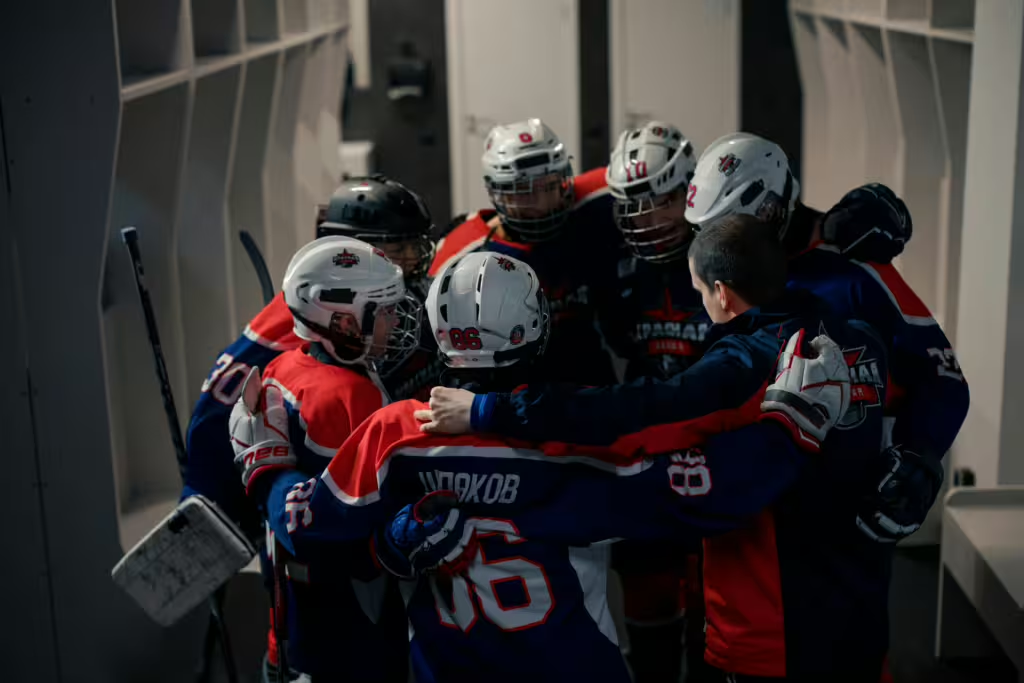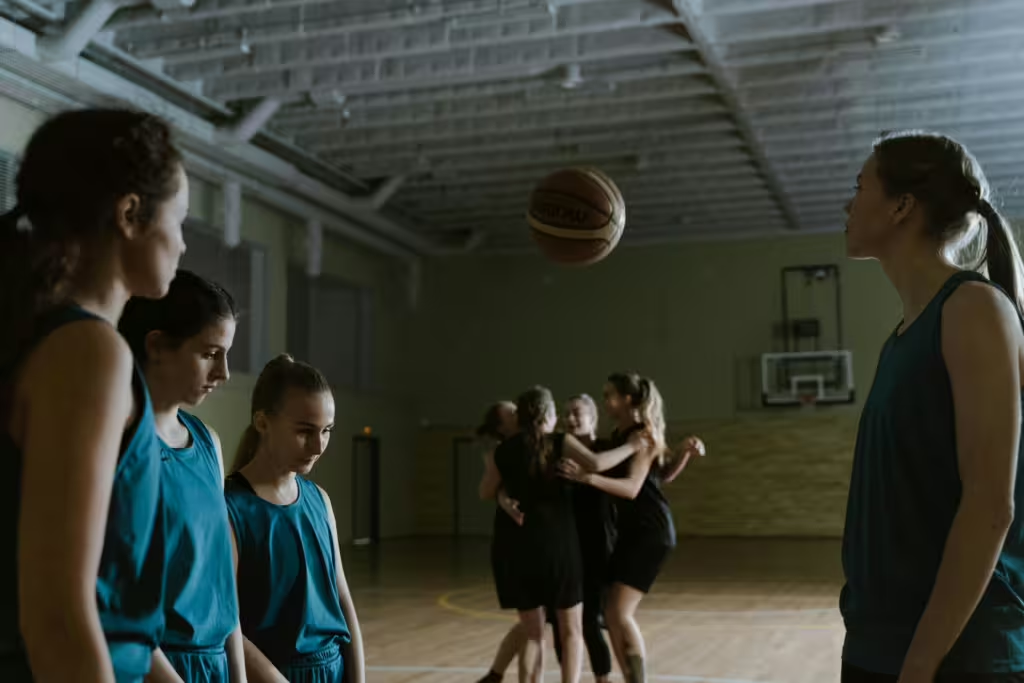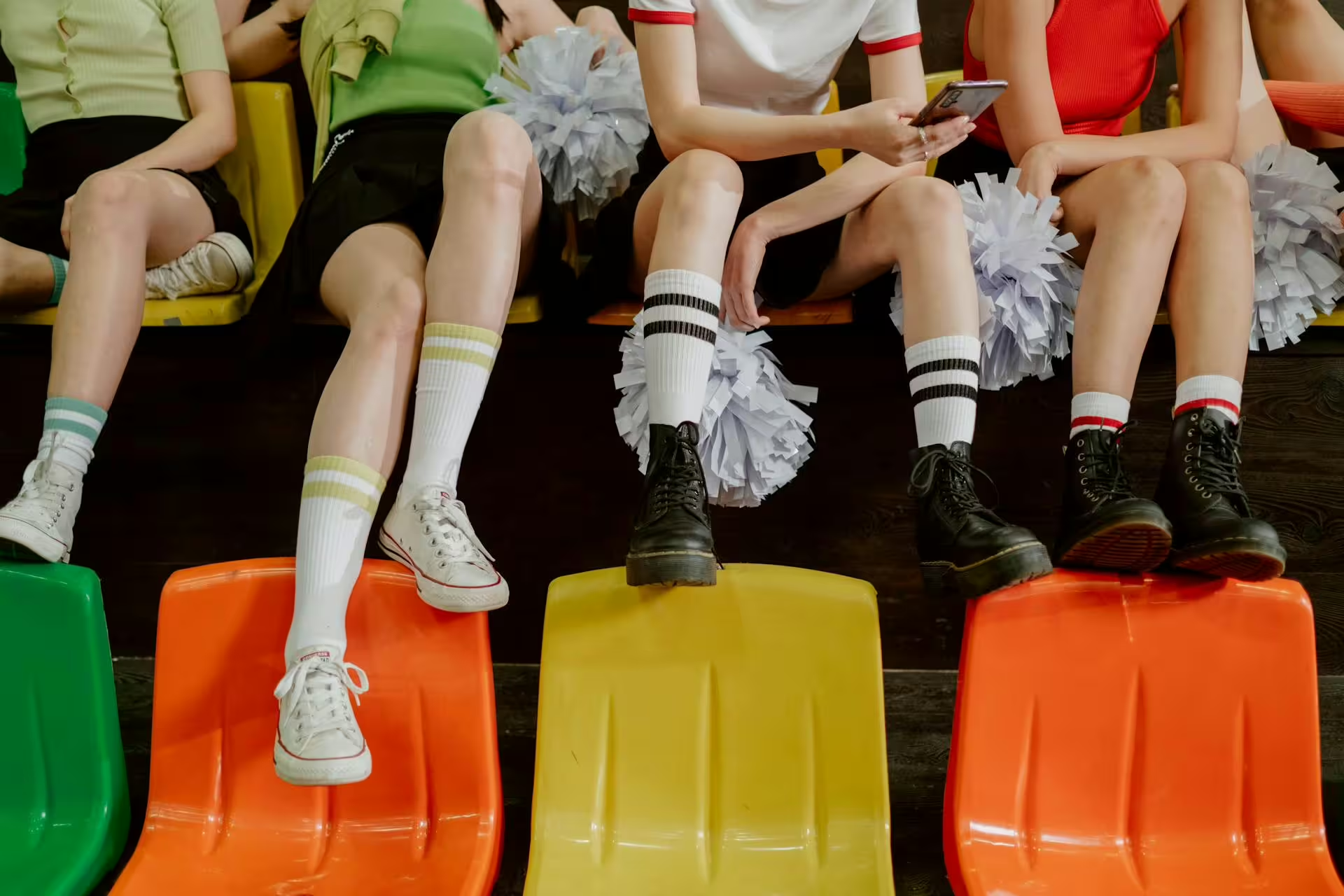Today, we are tabling our usual talk of pee wee hockey and basketball basics, to discuss youth sports of a higher age bracket. No, we’re not quite up to college sports just yet. After all, college may still be adolescence, but it’s hardly what one might consider a “youth sports experience.” No, today, Cultured Athlete is heading to the hallowed halls of high school—a place where change, growth, and responsibility begin to take center stage for many children.
As many parents are likely aware, the high school experience can be a fickle, frustrating enterprise, especially for student-athletes. The years a child spends in high school come with their own set of unique social, physical, and emotional challenges. It is basically a morass of uncharted territory, a hive of would-be friends and bitter enemies all lying in wait. Hyperbolic though that might all sound, there is no doubt that these poetical statements don’t hit home with certain readers. Add to all that, the challenges of juggling both academics and athletics, and you have a recipe for disaster.
The good news in all this, is that there is a way to manage this latter concern—even if the former are just things your child has to figure out for themselves. As parents, we cannot do much to help our kids once they reach this overwhelming stage of their lives, but we can guide them in the ways of practicality. Our role lies in helping our teenagers to develop the skills, routines, and mindset they will need to balance the classroom, the playing field, and all the other claims on their time and attention that will inevitably arise in the four years they attend high school.
In this article, we will discuss some practical strategies that parents can use to guide their teenage athletes in the art of scheduling. We will offer tips for balancing schoolwork with sports, thereby ensuring that your kids can succeed not only as players, students, and well-rounded individuals.

On Balance
We all know that sports are an excellent way for young children to experience socialization and teamwork, enhance their skills, engage in physical fitness, and learn resilience, but the benefits do not end when a child turns 14. Teen sports offer up their own benefits of confidence, teamwork, and discipline, while simultaneously offering young people a sense of purpose they might be struggling to find whilst in the throes of puberty. Academics, are of similar importance at this stage, as they are often the foundation for a persons future opportunities, whether in college or in their chosen career beyond athletics.
As both aspects are important, it stands to reason that achieving the right balance between the two becomes doubly so. We cannot choose one over the other, as neglecting either risks closing doors that may take some real finagling to reopen in that child’s future. Many parents might already be worrying that committing too heavily to sports will ultimately hurt their child’s grades. Others might be concerned about the opposite, that focusing too heavily on academic pursuits will harm or limit their teen’s athletic skill or growth.
The truth of the matter is, when managed well, athletics and academics can be the perfect complement to one another. Indeed, the time management, discipline, and resilience learned on the field can directly improve one’s performance in the classroom. That said, striking that balance often requires intentional effort from both the teens themselves and their families.
The Demands of High School Athletes
With that all out in the open, we should get down to the harsh truth of the matter, if they don’t already know it. High school athletics is highly-demanding, for kids, as well as their parents. Obviously the teens are the ones facing the most intense pressures, pressures such as:
- Daily practices and games: Many teen sports involve two to three hours of practice each day, sometimes after school and sometimes before. Frequent games on weekends are also usually a requirement.
- Travel time: Away games are common and can often mean long bus rides, late nights, and reduced hours for study, as well as sleep.
- School load: Academics aren’t much better. High school coursework, especially honors or AP classes, can add an additional 3–4 hours of homework onto an already full daily schedule.
- Social expectations: Even with all of these “requirements” we cannot forget that teens will need to be teens. They need to have a social life and a family life. Moreover, they will want to spend time with their friends, boyfriends/girlfriends, and make time for extracurricular activities outside of sports.
With all of this, it’s easy to see why many student-athletes can feel overwhelmed. We felt it too when we were teens, so it should be easy enough for us to recognize the signs.
Time Management
Proper time management is the cornerstone of properly balancing school and sports. Parents can coach their children in creating structure around their day by using planners or apps to track assignments, deadlines, practices, and more. Apps like Google Calendar and Notion can actually sync reminders and link to the accounts of the whole family.
Next, parents need to teach kids which tasks are “urgent” and which are merely “important.” Understanding the difference can make or break a teen’s grasp of actual priority. One good example for this is understanding the difference between a mat test tomorrow and a history paper that is due in two weeks. It isn’t always easy for young brains to get this, but it will help them loads in the future; even as they enter into the workplace.
If it helps, teach them to break down large tasks into smaller, more manageable chunks. Through all of this, make sure your child takes time for breaks in between. Building in 30-minute rest periods can actually boost their overall productivity and prevent the dreaded burnout. It can also help them feel more in control of the situation.

The Power of Routine
Athletes—and indeed children, in general—thrive on routine. Balancing sports and academics is the perfect way to demonstrate how the power of routine can enhance a person’s experience. Some strategies for implementing routines include: homework routines, sleeping schedules, and practice rituals. Whether it’s right after practice or before dinner, making time in the routine for homework, specifically, helps reduce the inevitable pull of procrastination. Considering high schoolers need around 8-10 hours of sleep a night, making sure that sleep is part of the routine is vital. A pre-practice ritual might include the teen packing their gear and schoolwork the night before they have to go in. This is the high school equivalent of “phone, wallet, keys,” and it works!
Rest and Recovery
We’ve spoken of it before, but with teens especially, burnout is a very real risk. Without rest, teens risk both injuries and academic decline. Parents can avoid burnout by enforcing good sleeping habits, including consistent bed times. We should also make sure that our children take the time time to recover when they need to, as well as stretching before and after games/practices. It should also be noted that proper nutrition and hydration are equally important to a teen’s physical and mental balance.
Making sure they have proper meals, breakfast especially, will set them up for success throughout their very busy day. In terms of mental health, parents should be on the lookout for any mood swings, frequent illnesses, or declining grades; any or all of these may signal burnout or a more serious issue at work. At the same time, any serious signs of anxiety, depression, or disinterest in sports and/or school may require professional intervention. Don’t be afraid to ask for help if you need it.
Real-Life Strategies
We have come to it, at last, some real, actionable tactics that families can try to help their teen to balance things properly. One of the top strategies involves doing academic assignments immediately after school. This means that, if time allows, homework should be done before practice begins. Parents can instruct their children to use Sunday mornings as a time to catch up with studying or any long-term school projects that may have been neglected over the course of the week.
Finally, scheduling and having a visual representation is the key to getting teens organized. Keep a central calendar—a physical one if possible—and make sure it is posted in a central location in the home; the kitchen is perfect for this. Make sure it is visible and has all practices, games, big projects, important events, holidays, and assignment deadlines clearly posted and accurate. Remember, even if these methods don’t work for you, consistency is always the key to long-term success.

Cultured Athlete Says…
As you can see, balancing books and balls isn’t going to be easy, but with the right measure of parental support, we can help our children to thrive. Our job is to help them build strong time management skills, and healthy routines. Along the way, we parents need to make time to speak to our teens, to support their mental and physical well-being, and help them to understand that the emotions and frustrations they’re feeling are valid.
Parents should also model resilience and demonstrate proper work-life balance in their own lives. Doing this will not only teach children how to shrug off the disappointments and mistakes when they come, but also show that there is a way to do everything, so long as one is savvy enough to manage it all. High school is four years and with the right strategies in place, we can help make those four years a truly positive experience that they will remember for the rest of their lives!
Discover more from CulturedAthlete
Subscribe to get the latest posts sent to your email.






